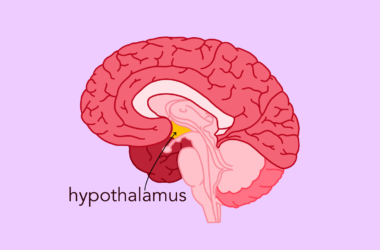Across Canada, Indigenous communities are grappling with a severe environmental crisis. Approximately 4,500 sites on reserve lands are listed as contaminated in the Canadian Federal Contaminated Sites Inventory, representing 29 per cent of all such sites nationwide. This disproportionate concentration of contaminated sites has resulted in significantly higher exposure to environmental contaminants for Indigenous populations compared to the general population.
Despite the urgency of this issue, there remains a notable lack of research into holistic, culturally appropriate methods of assessing environmental contamination and its health impacts on Indigenous communities.
In response to this critical gap, Katie Chong, a PhD student in McGill’s Faculty of Agricultural and Environmental Sciences, conducted a study evaluating conventional risk assessment practices across Indigenous communities in Canada.
Using an anonymous mixed-method survey, Chong gathered insights from 38 stakeholders—including representatives from Indigenous governments, environment and health offices, federal and provincial agencies, and academia—who are actively involved in risk assessment work in Indigenous contexts.
One of the study’s key findings pointed to risk communication—the process of sharing information about potential environmental hazards with stakeholders—as the most challenging aspect of the assessment process. Participants noted particular difficulties in navigating the balance between communicating the risks of consuming contaminated traditional foods and acknowledging these foods’ deep cultural, nutritional, and spiritual significance.
Nearly all respondents identified time constraints, high costs, and limited resources as moderate to serious barriers in their work. Few respondents were familiar with innovative risk assessment methods, and around three-quarters agreed that current approaches require significant improvement.
Chong’s research also underscores how the disproportionate exposure of Indigenous communities to environmental contaminants is rooted in historical and ongoing environmental racism.
“Environmental racism is basically a broad term that refers to marginalized and racialized communities being inequitably exposed to or affected by environmental issues, such as contamination or climate change,” Chong said in an interview with The Tribune. “It has been the root of pervasive environmental justice issues both within Canada and globally.”
Beyond health effects, environmental contamination threatens cultural continuity. Of particular concern are species such as the boreal caribou, which are significant to many Indigenous groups, not only as a source of food but as a central figure in ceremonies, stories, and community knowledge. When environmental contamination endangers such species, Indigenous communities risk losing generations of traditional knowledge and cultural identity.
While Canadian federal and provincial environmental policies regulate industrial activities and contaminated site remediation through frameworks like Human Health Risk Assessment (HHRA) and Ecological Risk Assessment (ERA), these conventional approaches often fall short.
“These two frameworks basically quantify how much of a chemical a person or species is exposed to and how toxic that chemical is. This allows us to calculate risk and [inform] decisions on a regulatory level,” Chong explained.
However, these conventional approaches often fail to address the complex and unique risk contexts that many Indigenous communities face. HHRAs, for instance, typically exclude critical exposure scenarios relevant to Indigenous practices, such as participation in ceremonial events or the harvesting and consumption of traditional foods.
The shortcomings of current assessment methods extend beyond their narrow scope.
“These methods provide a [restricted] definition of health that’s based on contaminant exposure and toxicity, which often fails to [encompass] the much broader and more holistic [understanding] of health that many Indigenous communities hold,” Chong added.
Moreover, these assessments are time-consuming and resource-intensive, posing a significant barrier given the vast number of contaminated sites and chemicals requiring evaluation.
Moving forward, Chong advocates for the development of more inclusive and culturally grounded assessment approaches. While acknowledging the study’s limitations, including its small scale and the diverse contexts of Indigenous communities across Canada, she emphasized its role as a foundation for future research.
“[This study] supports the need to develop new approaches to risk assessment that are designed for and by Indigenous communities specifically,” Chong noted, highlighting the importance of integrating diverse perspectives and improving cumulative risk assessment techniques.
According to study participants, modernizing risk assessment requires advancing cumulative risk evaluation, enhancing risk communication, and promoting Indigenous leadership and knowledge at every stage of the assessment process.









